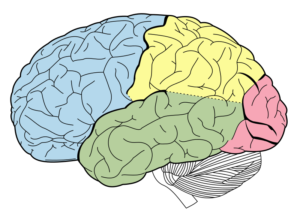
The basolateral amygdala is a part of the brain that has almost been only studied for its responses to fear and emotion. Recently, researchers have begun to study how the basolateral amygdala affects memory and behavior. A team of neuroscience researchers at the Sainsbury Wellcome Centre in UCL wanted to observe the activity of the basolateral amygdala during natural activities.
The amygdala is an area of the brain located near the ear. With our current research, scientists know that it is mainly responsible for emotions and processing fearful and threatening stimuli. The amygdala develops over time, which is why adults usually have better control of their reactions to fear or threats. For example, young kids are not allowed to drive because they do not have a fully developed amygdala, which makes it more dangerous for them to be in situations like driving.
The neuroscientists at UCL wanted to go beyond what is currently known and study how the basolateral amygdala behaves in a natural— not laboratory— setting. The researchers performed the experiment on rats and recorded their neurons using Neuropixels probes. It was important to the researchers that they used natural activities to stimulate the rats’ brains and not experiment induced activities, like tasks and mazes. They used natural stimuli that are around animals in their everyday lives, such as male and female rats, food smells and movement from a toy mouse.
The scientists used their recordings of the BLA neurons to observe the neural activity of the rats when they responded to natural stimuli. Remarkably, an abundant 1/3 of the neuron cells showed a response and the response lasted throughout the whole event. Some of the cells even continued to stay activated for several minutes after the event ended. The researchers speculate that the after-response acts as a memory system telling the brain to store information and remember the event’s importance.
Through the recordings, the researchers could also identify the flow of information between neurons and discover the different paths that were traveled in the brain according to different stimuli. They found that the information flowed from more tuned neurons to less tuned neurons.
The neuroscience researchers were pleasantly surprised by the results of the study. Their findings indicate that the basolateral amygdala plays an important part when it comes to social and naturalistic activities. They were able to learn more about how the neuron cells in the amygdala behave and interact. The study also reveals more about the memory functions of the amygdala.
These results give way to a lot more information that scientists need to research and learn more about. There are still 2/3 of the cells remaining that did not respond to the stimuli, and the researchers of the study want to know what they respond to and how they function. To fully understand the basolateral amygdala, we need to explore more of its memory functions and how its cells behave during different activities.
Written By: Vivien Chen
July 9, 2022
